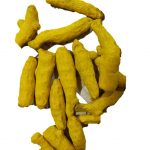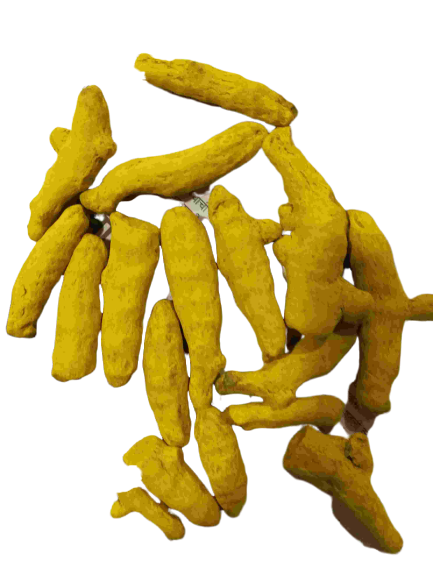We are among the TOP 25 exporters of Turmeric from INDIA.
We source the raw material directly from the farmers and process it ourselves at our faactory as per our buyers requiremnts.
Packing is in Bags of 25, 50 kgs.
We can supply the following qualities/grade of Turmeric in WHOLE or GROUND form:
NIZAMABAD Fingers, Bulbs
Grown in the Southern regions of INDIA, it is charactersied with its healthy bloated appearance. It has as Orange core which yields a Tangerine color powder with a CURCUMIN content between 1.8 to 2.5.
Get our Price


SALEM FINGERS & BULBS
Typical long but slightly thin in appearance, this type is preferrred for its higher CURCUMIN content above 4. When ground the powder has a shiny GOLD color with a pleasing fragrance
Get our Price
CUDDAPAH FINGERS
From another different region in Southern INDIA, these fingers are medium length, thinner impoverished cousins. They have a darker core with a Curcumin content around 2.
Get our Price

English Name: Turmeric
Arabic Name: كركم (Kurkum)
Chinese Name: 姜黄 (Jiāng Huáng)
Spanish Name: Cúrcuma
Japanese Name: ウコン (Ukon)
Origin: Turmeric is derived from the rhizomes of the Curcuma longa plant, which is native to South Asia, particularly India. It is also cultivated in countries like China, Indonesia, and Peru.
Growing Areas: Turmeric is primarily grown in tropical regions with a warm and humid climate. Major producing countries include India, Bangladesh, Thailand, China, and Indonesia.
Harvest Season: The harvest season for turmeric varies depending on the growing region. In general, turmeric is harvested when the leaves and stems dry out, typically around 7 to 10 months after planting.
Characteristics:
- Color: Turmeric is known for its vibrant golden-yellow color. The rhizomes contain a compound called curcumin, which is responsible for its bright hue.
- Flavor Profile: Turmeric has a warm, earthy, and slightly bitter flavor with aromatic undertones. It adds depth and complexity to dishes without overpowering other flavors.
- Aroma: Turmeric has a subtle yet distinct fragrance, often described as a combination of earthiness and mild spiciness.
Grades and Qualities:
- Turmeric is available in different forms, including:
- Whole Turmeric: This refers to the whole rhizomes, which can be used for grinding into powder or for specific culinary applications.
- Turmeric Powder: Dried and ground turmeric rhizomes form a fine powder that is widely used as a spice and coloring agent in various cuisines.
- Turmeric Extract: Concentrated forms of turmeric, such as turmeric extracts or oils, are used in food, cosmetic, and medicinal applications.
Usage:
- Culinary Uses: Turmeric is a key ingredient in many culinary traditions, particularly in South Asian cuisines. It is used in curries, spice blends, rice dishes, soups, stews, and pickles. Turmeric powder is also used as a natural food coloring agent.
- Medicinal Properties: Turmeric is renowned for its potential health benefits. It contains curcumin, which has antioxidant and anti-inflammatory properties. Turmeric is believed to support immune health, aid digestion, promote joint health, and have potential anti-cancer properties.
Adulteration: Adulteration of turmeric can occur with fillers, low-quality substitutes, or artificial colorants. It is essential to source turmeric from reputable suppliers to ensure purity and quality.
: Turmeric prices can be influenced by factors such as crop yield, demand, market conditions, and quality. Seasonal variations and supply-demand dynamics may impact prices. Stay updated with market trends to make informed decisions.
